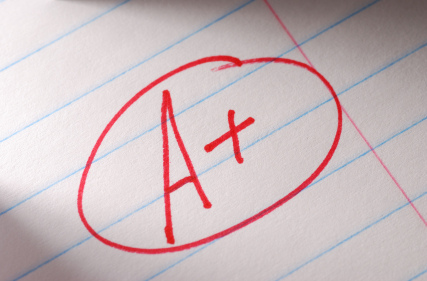
The Cato Institute released their biannual Fiscal Policy Report Card on America’s Governors 2014, which examines state budget actions since 2012. From a limited-government perspective the report grades America’s governors based on their fiscal policies and actions. Governors that were able to reduce spending and taxes the most received the highest grades, while governors that increased spending and taxation received the lowest grades.
One of the four governors to receive an “A” was Governor Sam Brownback of Kansas. The report highlighted major tax reform initiated by Gov. Brownback in 2012 as a key factor in earning him a high rating. Through tax reform in Kansas the number of tax brackets were reduced from three to two, while the top rate was cut from 6.45 to 4.9 percent. The reform also increased standard deductions, reduced taxes on small businesses, and repealed numerous narrow tax breaks. Additionally, Gov. Brownback approved changes in 2013 that included further income tax cuts and broadened the income tax base. Aside from the tax reform, the report also noted the governor’s ability to be frugal with budgeting which has resulted in only minimal increases in general spending.
Also among the governors earning an “A” was Governor Pat McCrory of North Carolina. One factor that lead to Gov. McCrory receiving a top grade was: a major tax reform package in 2013 which replaced three individual income tax rates (6.0, 7.0 and 7.75) with a single rate of 5.8 percent falling to 5.75 percent in 2015. In addition to this, McCrory also helped cut the corporate tax rate, repeal the estate tax, and broadened the sales tax base. The report noted that Gov. McCrory has been able to keep spending under control, while recently enacting further tax cuts for 2014.
Also earning an “A” was Governor Paul LePage of Maine. The factors that lead to Gov. LePage receiving the top grade were: his continued support for further tax and spending reforms, the relative consistency of general funding during the past three years, a reduction in state government employment, and the cost-cutting reforms to welfare and healthcare programs. Also noted was Gov. LePage’s use of the veto to stop tax hikes, which were ultimately overridden by the state legislature. This year LePage has proposed matching $100 million in new tax cuts with $100 million in spending cuts.
A governor who did not fare well in the report was Colorado Governor John Hickenlooper. Some of the factors that earned him a failing grade were: general funding increases from $7.2 billion in 2012 to a proposed $9.2 billion in 2015 and proposed spending increases averaging 6 percent for the past three years. His recent budget which included a 15 percent spending increase for higher education as well as new spending on corporate welfare, and an increase in state government employment by 16 percent over the past three years. In addition, Gov. Hickenlooper advocated for a large personal income tax increase that was on the ballot in 2013 which would have replaced Colorado’s flat 4.63 percent income tax with a two-rate structure of 5.0 and 5.9 percent. Luckily the amendment did not pass.
Three of the governors previously mentioned are up for re-election and are currently in close races. Kansas Governor Brownback is currently tied with his challenger Paul Davis according to the Real Clear Politics average. President of Americans for Tax Reform Grover Norquist has called Kansas’ gubernatorial election “the most important race in the 2014 cycle”. While Real Clear Politics has Maine Gov. LePage leading by a half a point over his challenger Mick Michaud, and Governor Hickenlooper leading by 2.5 points over his challenger Bob Beauprez in Colorado. North Carolina Governor Pat McCrory is not up for re-election this year.
With the release of the Cato Institute’s biannual report, taxpayers will be able to see which governors are fiscally responsible and which are addicted to taxing and spending. Governors Brownback, LePage, and McCrory earned high marks for their ability to engage in real reform by lowering taxation and spending. Alternatively, Governor Hickenlooper has received the lowest grade possible due to his taxing and spending policies.

